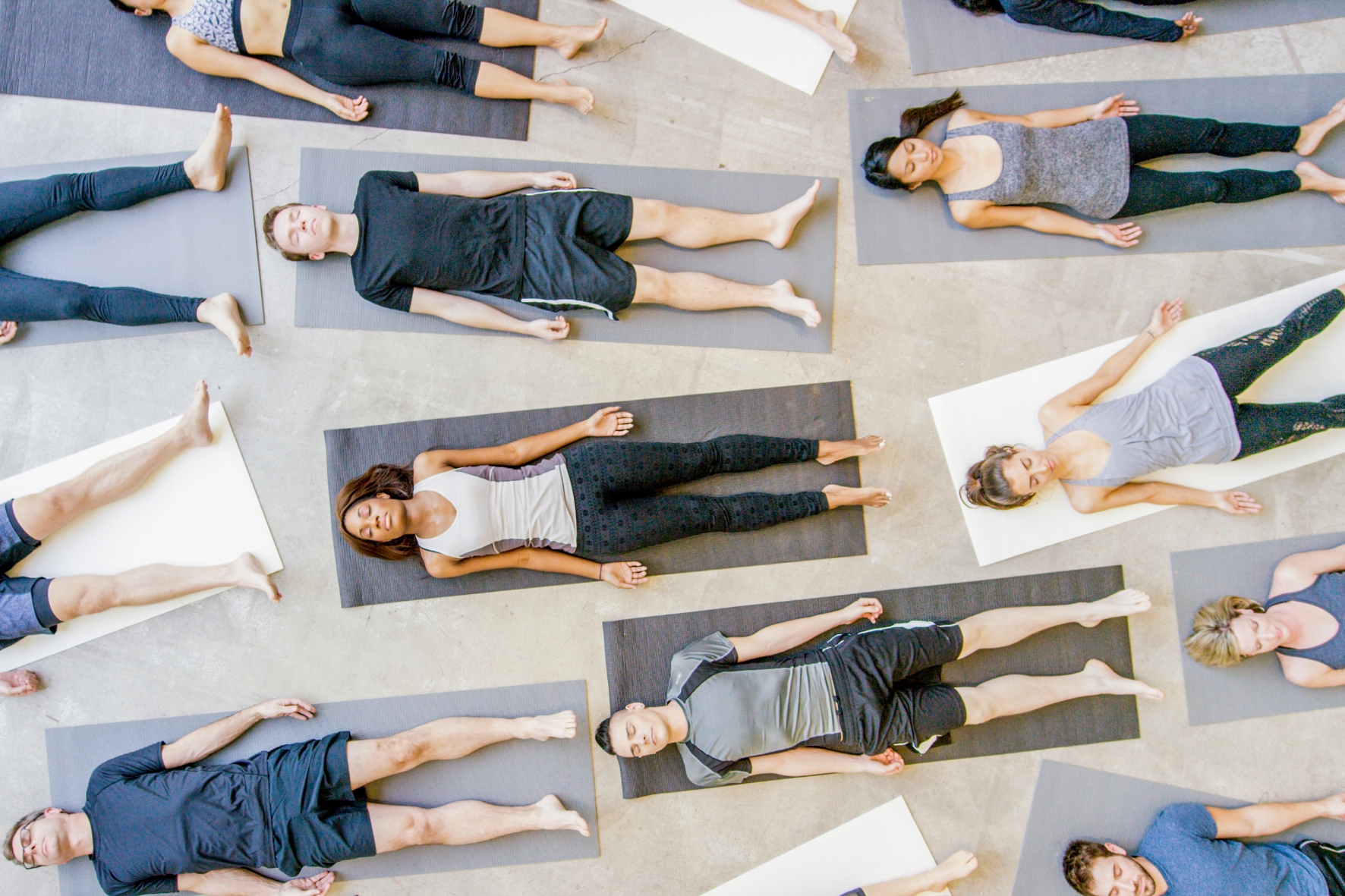Recently, the Gentle Yoga yoga class I teach at a local country club here in Cary, North Carolina has been filling to capacity.
Each week, students find themselves scooting mats to make room for their neighbor. For the first year post-pandemic, this class consisted of a small group of committed students who were seeking a low-impact, meditative practice. The packed group classes were the Saturday morning Power Yoga classes or the Monday night Flow class. I was content to teach my odd-hours midday “easy” class to a small group. When the class started filling up, I thought it was temporary. A result of The New Year surge in attendance. The rain canceling afternoon golf. Certainly, attendance would return to that small group of students soon.
Instead, the class has grown to two classes per week at odd afternoon hours and now both are full. Each week, new students come in who have heard about the benefits of this slower, gentler yoga practice. I’ve had to start regulating more than I would like to in order to make space for all the participants. Mats have to be placed a certain way, I’ve started reminding members to arrive on time if they want to be assured a space in class. Last week, as I was making the announcement about enforcement of the rules to our newer-to-yoga students (and those who might have been used to quietly scooting in a minute late to a relatively empty room) I realized that this was the new normal and I think I know why.
We all need more yoga in our lives.
There is something about yoga that makes it different than every other exercise class on the schedule.
There is a reason we don’t call it “Stretch Poses” or “Stretch and Balance” class.
Even though we periodically see yoga teachers try to re-name their classes in an effort to make their offerings more palatable to mainstream fitness enthusiasts, those classes will never deliver the same effect and will never be as popular as a yoga class for a few important reasons.
The number one reason is the breath.
Yogic breathing is a time-tested tradition and the most important difference between yoga and other fitness classes. In yoga, we pay attention to quality of the breath. There are some traditions that begin teaching the breath after the student has begun to master the postures but the goal in a physical yoga practice will always be to learn breathing and the art of pranayama (the Sanskrit term for breathwork).
Another reason sense withdrawal.
Distractions such as chatting or laughing, cell phones ringing, or a student leaving in the middle of class can all pull the attention of the group away from the level of concentration they have worked to establish. In some ways disruptions are good teaching moments because it can help us train our awareness to return to concentration without becoming overly distracted. But, in a perfect world, our time would best be spent honing our experience of inner awareness, quietly concentrating our focus more and more intently on the present moment that we practice in our bodies, breath and mind. In the traditional yogic tradition, this is known as “Sense Withdrawal” and there is a long and important tradition of establishing and maintaining this level of focus in the practice of yoga.
This is sometimes achieved through centering practice and savasana at the end of class. Closing the eyes, turning attention toward the inner experience and attempting to minimize distractions is an important experience in yoga. This is why disruptions can be so much more jarring than in a typical fitness class.
Finally, we develop the ability to listen deeply.
Those of us who practice yoga know there are dozens of reasons why yoga is so special compared to other movement practices but one of the aspects of the practice that makes yoga different is often referred to as “Listening to Your Body.”
There are a number of traditional concepts that could be applied to the idea of listening but I think one of the more illuminating teachings is Svadhyaya which translates to “Self-Study.”
Once we have established attention to the breath and sense withdrawal, the process of self-study on the yoga mat can begin to unfold. In scientific terms this is also known as “interoception” or sensing internal signals from our body.
Most of our modern life is spent focused on the mental energy required to accomplish the work of getting through the work week, followed by escaping from the effort required to live day to day in a busy and complicated world. Even those of us who commit ourselves to contemplative religious services can expend an incredible amount of work to be present with our faith community.
So much of our modern rituals are focused on what we are doing for others. For many people, pausing to focus our attention on our own bodies, breath and experience without the need to do anything for anyone else and for no other reason than to listen can be a total revelation, a completely new and profound way to come into relationship with our bodies.
In yoga, the entire hour is spent quietly moving and breathing, with minimal distractions, as an invitation to notice and respond to our inner experience. We end class with quiet rest in an attempt to hear what might otherwise be drowned out by the hustle and noise of our daily life.
I believe the popularity of a quieter, gentler yoga class speaks volumes about the profound impact yoga can have on our lives in a modern world.
Despite the availability of countless exercise classes, there’s something unique to yoga that will always set it apart. Yoga is not simply about moving; it’s a holistic practice within a long and time-tested wisdom tradition.
Through yoga, we embark on a journey of introspection, listening to the gentle voice of our inner selves amidst the chaos of daily life.
As the practice of yoga continues to draw in new students seeking solace and self-discovery, it’s clear that these classes are not just about moving and stretching. Beyond just a physical practice, yoga offers a sanctuary for the mind, body, and soul—a space where we can truly come home to ourselves.
We call it “Yoga” because it’s a whole journey of connecting with yourself on a deeper level—mind, body, and breath. While stretching might help with flexibility, and standing postures might help with balance and strength, yoga offers us a deep and rich experience, a sanctuary where you can explore and grow in every aspect of your being.




